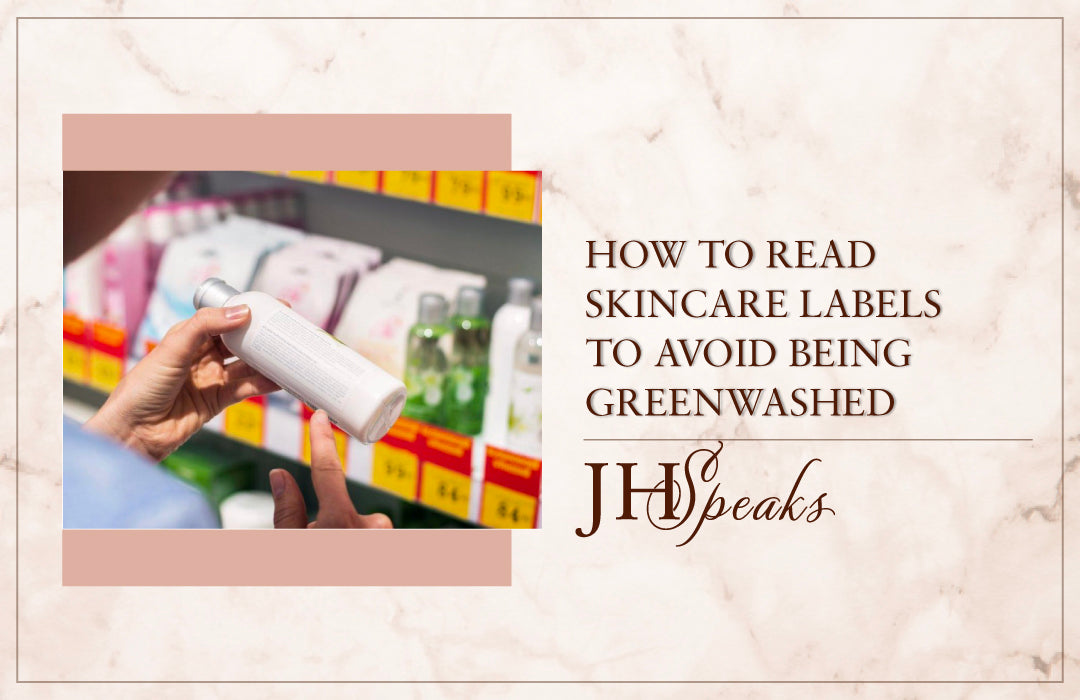Buzzwords like “natural,” “pure,” “botanical” and “eco” are not regulated, and packaging with botanical illustrations can be misleading. As the beauty industry is riding high on the green wave and the consumers are leaning towards products that are made from naturally derived ingredients, it is facing another challenge, that of greenwashing.
What is greenwashing?
Greenwashing is the practice of making an unsubstantiated or misleading claim about the environmental benefits of a product, service, technology or company practice. A brand may choose to deceptively project itself as greener through packaging and advertising than it really is. Greenwashing can also make a company appear to be more environmentally friendly than it really is. Within the skincare segment, greenwashing is becoming almost an epidemic. If a brand is shouting from the rooftops that it is chemical-free, then that should be a major red flag for the customer. Everything in the planet, including our bodies and plants are, is all chemicals.
What as a conscious customer, you should be checking instead is whether these chemicals are naturally-derived or synthetically-produced? Here, you also need to understand that everything that is synthesised in a laboratory is not necessarily toxic. Naturally-derived ingredients could be gentler on the skin, but that doesn’t mean that you swing to the other extreme and believe that all alien-sounding chemicals on the labels are lethal.

One of the ways to avoid being greenwashed is to flip the bottle and decode the fine print. Usually, on the label, you will find the brand name, product name and product type and a brief description. Then on the back label come the ingredient list, symbols, weight/volume, usage instructions and manufacturer’s details. To know if the brand is being true to their claim you need to understand how to read the labels. It’s not a fool-proof method, but can give a fair bit of hint that you are on the right track.
Check the extent of ingredient disclosure
1. The order the ingredients are listed on the label is important. Ingredients should be listed in descending order from greatest amount to least amount present in the product (except ingredients present at a concentration of less than 1%; those can be listed in any order). This means that the first ingredient is the one that has the most percentage in the product, whereas the last one listed has the least.

2. Notice if just the ‘key ingredients’ or ‘active ingredients’ are listed. This makes the ingredient list quite crisp and back label neat. Not to miss enticing, as wouldn’t we all love a lotion that has only roses and milk? However, a full disclosure of ingredients implies that the brand is committed to be transparent with its customers. This is one of the tell-tale signs of a clean beauty brand. However, a concise back label doesn’t mean you dismiss the product or the brand. If it piques your interest, email them and most clean beauty brands respond with a full list.
3. Look for creams and lotions with botanical oils such as jojoba, grapeseed safflower, almond, sesame and apricot etc. in them. These not only provide nutrition but are also very close to natural oils of skin. If these are cold-pressed, that’s even better as that indicates higher nutritive value.
4. Another giveaway is the shelf life. An organic or natural product which is not oil-based will have a shorter shelf life. Look for the symbol that gives you an indication of when to use the product by. This might be indicated by a ‘best before end’ date (BBE), which can be represented by an hourglass symbol, or a ‘period after opening’ duration, represented by opened jar symbol. The recyclable symbol means that the packaging of the product can be recycled. On plastic packaging, you’ll often see a symbol that tells you what type of plastic the packaging is made from so you can recycle it correctly.
Look out for the symbols
An organic claim on the front label must be supported by a recognised symbol from one of the certification organizations on the back label. That said, a stamp doesn’t necessarily mean the product is safer, but it does indicate that it has passed certain guidelines
A Few Leading Certification Symbols

USDA organic:
United States standard for organic products seal signifies that at least 95% of the ingredients are certified organic and free of synthetic additives like pesticides, preservatives, dyes, among others.

EcoCert:
France-based international standard for organic foods and cosmetics. An Ecocert Organic symbol on the label means at least 95% of the plant-based ingredients, and at least 10% of them by weight are organic. On the other hand, Ecocert Natural signifies that at least 50% of the product’s plant-based ingredients and at least 5% by weight are organic

Cosmebio:
French standard for natural and/or organic cosmetics.

Leaping Bunny:
>A US-based organization that certifies products that have not been tested on animal nor contain ingredients tested on animals. It has certified over 600 companies.

PETA:
The US-based organization that certifies products that have not been tested on animal, nor contain ingredients tested on animals. It has certified over 1900 companies.

Fairtrade:
For a product to display the Fairtrade Mark it must meet the international Fairtrade social, economic and environmental standards which are set by the certification body Fairtrade International. This method takes an ethical standpoint, and considers the farmers first.

BDIH:
BDIH (Association of German Industries and Trading Firms) is a German based organisation comprising over 440 producers and distributors of cosmetics, food supplements, nutritional foods and over-the-counter medicines. The guidelines cover raw materials from plant and mineral, animal protection and they reject use of organic-synthetic dyes, synthetic fragrances, silicones, parabens and other petroleum-based products.
Read More:
1. Fenel





